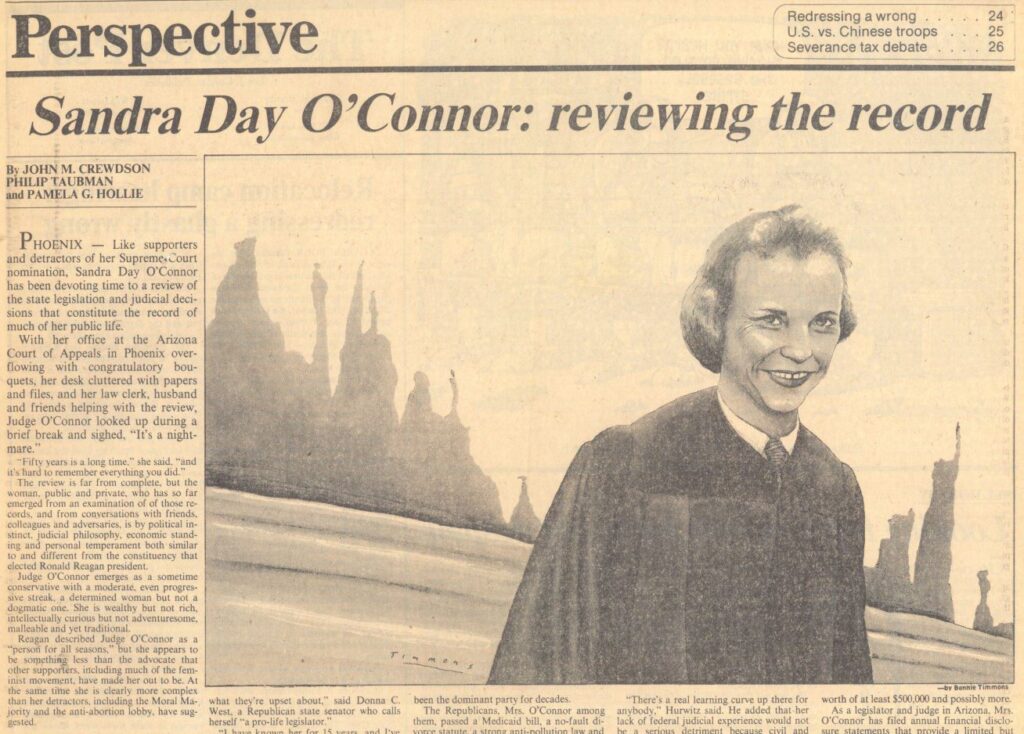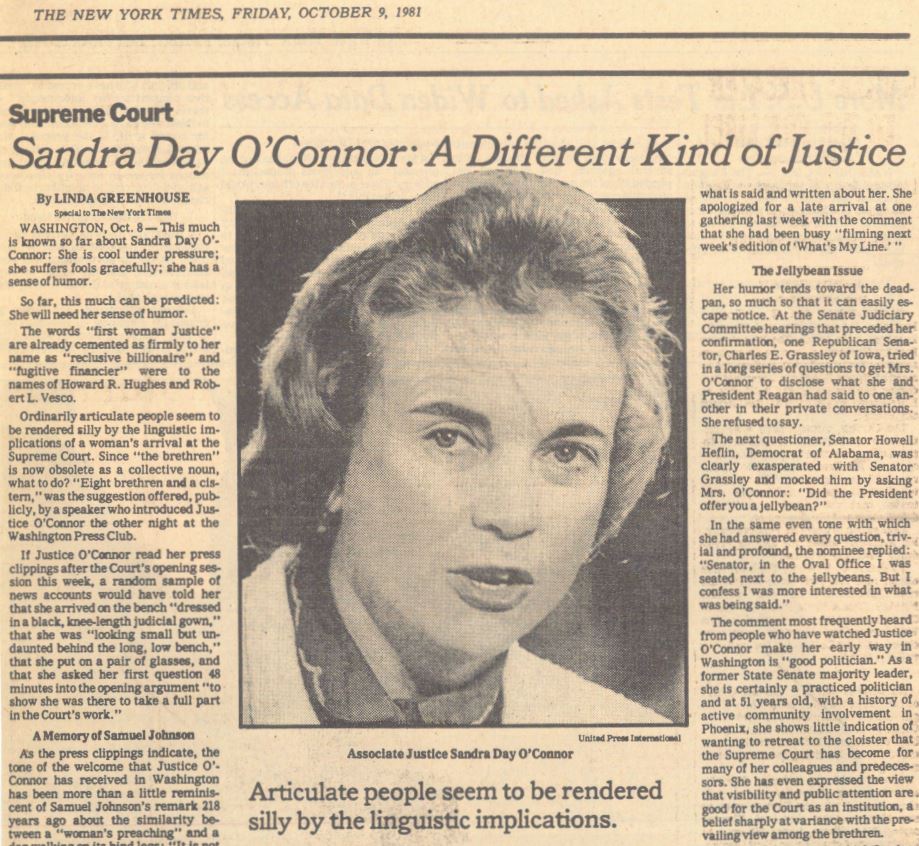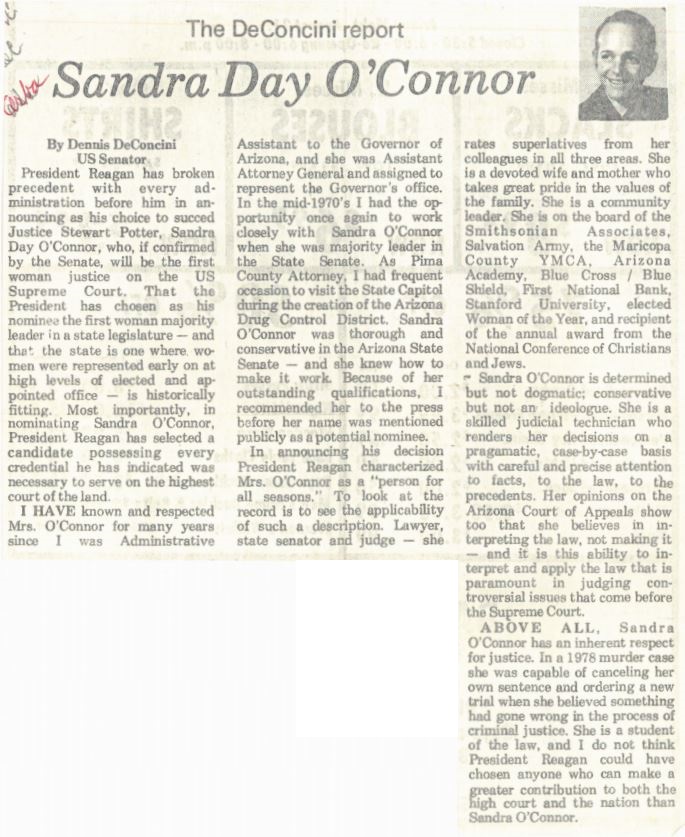Sandra for Veep?
Where the rumor started, no one seems to know.. But now Baltimore Sun Washington correspondent Lyle Denniston has published what had been mere gossip among politicians. Denniston writes that it is “common speculation” that Justice Sandra O’Connor may be interested in running for vice president. At the risk of trying to speak for Justice O’Connor, we suspect the speculation is more wishful thinking by some eager Republican political matchmaker looking for a so-called dream ticket. Certainly none of Justice O’Connor’s intimates takes the report seriously, nor have they heard any interest by her about leaving the Supreme Court. In fact, Justice O’Connor is known to relish the potential of the career that lies ahead on the nation’s highest judicial body, which has more influence over national policy than the vice president does.
Moreover, Justice O’Connor chose long ago to abandon elective office in favor of the judiciary. When confronted with the opportunity some years ago of running for governor, she chose instead a career in the state court system. Presidential and vice presidential politics are a risky business. The American electorate is unpredictable, and there is no certainty that Republicans – of which Justice O’Connor is one – will retain the White House the next go-around in 1984. On the other hand, Justice O’Connor has a lifetime seat on the court. Speculation that she would leave that elegant position for the rowdy politics of a presidential campaign simply defy logic





